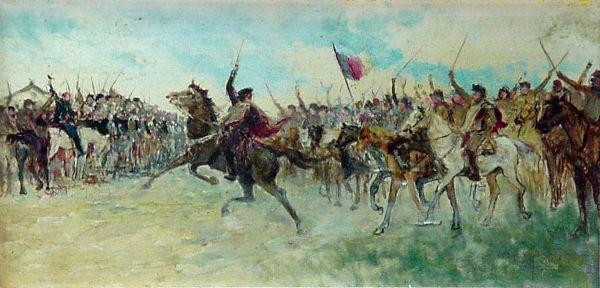When we are studying for a calculus assessment, we usually solve several exercises. When solving exercises, we are actually making a comparison between quantities. Therefore, we can say that physics relies on measurements to study the phenomena that surround us. Thus, when we measure a quantity, the determined value has a precision limited by factors such as uncertainty. associated with any instrument, the skill of the experimenter and the number of measurements carried out.
Let's suppose then that we are measuring something with a school ruler, that is, a ruler whose smallest division is the millimeter, but as the ruler is often used, the millimeter graduation marks are no longer visible. Therefore, the ruler has only a 1 cm division.
When we express a measure of 9.6 cm, the decimal value of that measure should be better evaluated if the ruler has divisions smaller than 1 cm. If we use the same ruler to measure the length of the thumb, as shown in the figure above, we can say that the length of this thumb is greater than 2 cm. As our ruler is only graduated in centimeters, it is impossible (for this ruler) to measure exactly how many millimeters the length of the thumb is greater than 2 cm.
Therefore, we say that the 2 is the only correct digit, as we have no doubt about its value. However, we can estimate how much larger the thumb is than 2 cm. In this case we can say, or better, estimate that its length exceeds 2 cm in 6 mm. As another evaluator might have made a different estimate, we say that this figure is unreliable.
Thus, when we are saying that the length of the thumb is 2.6 cm, we are proposing a meaningful two-digit result. We then say that to the extent, the numbers 2 and 6 are significant, so 2 is the correct number and 6 is the doubtful number.
If someone else had noted the length of the thumb as 2 cm, they would not have used the ruler correctly. If another student had evaluated the length at 2.63 cm, he would have made a mistake by estimating the figure 3. The 2.63 cm measurement for this length is no longer accurate: it is wrong.
Rounding
In operations with significant algharisms, we often need to consider an approximation of the measure with a smaller number of significant digits. This process is called rounding. For rounding, we will adopt the following rule:
- if the digit to be eliminated is greater than or equal to five, we add a unit to the first digit located on the left.
- if the digit to be eliminated is less than five, the left digit must be kept unchanged.
So, for example, if we have to leave the values with only 2 significant digits, we will have: 7.84 ≈ 7.8 and 7.87 ≈ 7.9, according to the criterion used for rounding.
By Domitiano Marques
Graduated in Physics
Source: Brazil School - https://brasilescola.uol.com.br/fisica/algarismos-significativos.htm

